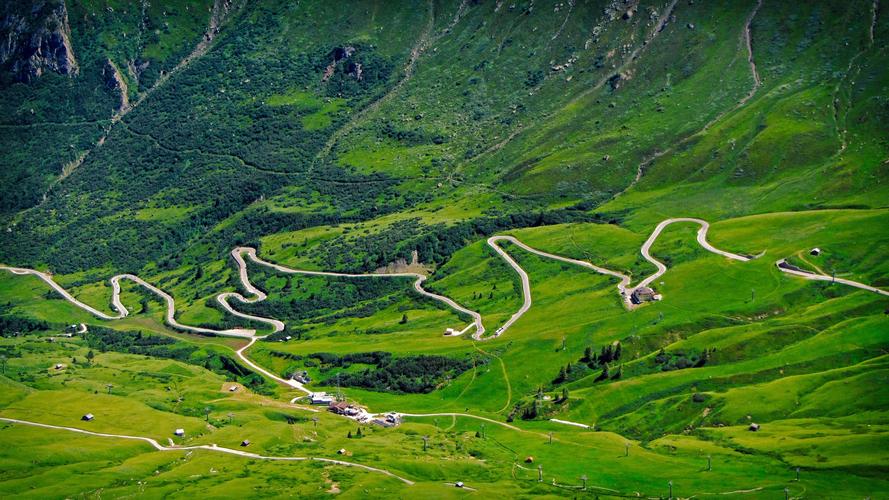admin管理员组文章数量:1794759

python实现卷积操作
0. 前言
卷积神经网络与全连接神经网络类似, 可以理解成一种变换, 这种变换一般由卷积、池化、激活函数等一系列操作组合而成. 本文就“卷积”部分稍作介绍.
1. 卷积介绍卷积可以看作是输入和卷积核之间的内积运算, 是两个实质函数之间的一种数学运算. 在卷积运算中, 通常使用卷积核将输入数据进行卷积运算得到的输出作为特征映射, 每个卷积核可获得一个特征映射. 如图所示, 一张大小为 5 × 5 × 3 5 \\times5 \\times3 5×5×3的图片经过零填充后, 大小变为 7 × 7 × 3 7 \\times 7 \\times 3 7×7×3. 使用两个大小为 3 × 3 × 3 3 \\times 3 \\times 3 3×3×3的卷积核进行步长为 1 1 1的卷积运算, 最后得到一个大小为 3 × 3 × 2 3 \\times 3 \\times 2 3×3×2的 feature map.
可以看到, 卷积核在图片所对应的矩阵中滑动. 每滑动到一个位置, 将对应数字相乘并求和, 得到一个特征图矩阵的元素. 注意, 卷积核每次滑动的步长为 1 1 1, 才能滑动到矩阵的边缘部分.
1.1 卷积的三种模式:FULL 橙色部分为image, 蓝色部分为filter. full模式的意思是, 从filter和image刚相交开始做卷积, 白色部分为填0.
SAME 当filter的中心与image的边角重合时, 开始做卷积运算.
VALID 当filter全部在image里面的时候,进行卷积运算.
首先定义如下参数,
- 输入大小 B × H × W × C B \\times H\\times W \\times C B×H×W×C
- 卷积核大小 b × h × w × C b \\times h \\times w \\times C b×h×w×C
- 步长 S S S
1.FULL: 输出大小 B × ⌊ H + h + 1 S ⌋ × ⌊ W + w + 1 S ⌋ × b B \\times \\lfloor \\frac {H + h +1} S \\rfloor \\times \\lfloor \\frac {W + w +1} S \\rfloor \\times b B×⌊SH+h+1⌋×⌊SW+w+1⌋×b
2.SAME: 输出大小 B × ⌊ H S ⌋ × ⌊ W S ⌋ × b B \\times \\lfloor \\frac HS \\rfloor \\times \\lfloor \\frac WS \\rfloor\\times b B×⌊SH⌋×⌊SW⌋×b
3.VALID: 输出大小 B × ⌊ H − h + 1 S ⌋ × ⌊ W − w + 1 S ⌋ × b B \\times \\lfloor \\frac {H - h +1} S \\rfloor \\times \\lfloor \\frac {W - w +1}{S} \\rfloor \\times b B×⌊SH−h+1⌋×⌊SW−w+1⌋×b
Tensorflow中的卷积有“same”和“valid”两种模式 Pytorch中可以直接通过设置参数“padding"来控制零层的填充.
同样, 我们可以基于零层填充的圈数 P P P, 得到我们的另一个计算公式: 输出大小 B × ⌊ H − h + 2 P S + 1 ⌋ × ⌊ W − w + 2 P S + 1 ⌋ × b B \\times \\lfloor \\frac{H-h+2P}{S} + 1 \\rfloor \\times \\lfloor \\frac{W-w+2P}{S} + 1 \\rfloor \\times b B×⌊SH−h+2P+1⌋×⌊SW−w+2P+1⌋×b
2. 代码实现 import numpy as np import math class Conv2D(): def __init__(self, inputShape, outputChannel, kernelSize, stride=1, method=""): self.height = inputShape[1] self.width = inputShape[2] self.inputChannel = inputShape[-1] self.outputChannel = outputChannel self.batchSize = inputShape[0] self.stride = stride self.kernelSize = kernelSize self.method = method # initial the parameters of the kernel, do not initial them as zero self.weights = np.random.standard_normal([self.inputChannel, kernelSize, kernelSize, self.outputChannel]) self.bias = np.random.standard_normal(self.outputChannel) # the shape of the output """ # This part has some problems if method == "FULL": self.output = np.zeros(inputShape[0], math.floor((inputShape[1] - kernelSize + 2 * (kernelSize - 1)) / self.stride) + 1, math.floor((inputShape[2] - kernelSize + 2 * (kernelSize - 1)) / self.stride) + 1, self.outputChannel) """ if method == "SAME": self.output = np.zeros( (self.batchSize, math.floor(self.height / self.stride), math.floor(self.width / self.stride), self.outputChannel)) if method == "VALID": self.output = np.zeros([self.batchSize, math.floor((self.height - kernelSize + 1) / self.stride), math.floor((self.width - kernelSize + 1) / self.stride), self.outputChannel]) def forward(self, x): weights = self.weights.reshape([-1, self.outputChannel]) # shape: [(h*w),#] # Filling operation # Note that: x is 4-dimensional. """ if self.method == "FULL": x = np.pad(x, ( (0, 0), (self.kernelSize - 1, self.kernelSize - 1), (self.kernelSize - 1, self.kernelSize - 1), (0, 0)), 'constant', constant_values=0) """ if self.method == "SAME": x = np.pad(x, ( (0, 0), (self.kernelSize // 2, self.kernelSize // 2), (self.kernelSize // 2, self.kernelSize // 2), (0, 0)), 'constant', constant_values=0) convOut = np.zeros(self.output.shape) for i in range(self.batchSize): img_i = x[i] # img_i = x[i][np.newaxis, :, :, :] colImage_i = self.im2col(img_i, self.kernelSize, self.stride) convOut[i] = np.reshape(np.dot(colImage_i, weights) + self.bias, self.output[0].shape) return convOut # im2col function def im2col(self, image, kernelSize, stride): imageCol = [] for i in range(0, image.shape[0] - kernelSize + 1, stride): for j in range(0, image.shape[1] - kernelSize + 1, stride): col = image[i:i + kernelSize, j:j + kernelSize, :].reshape([-1]) # col = image[:, i:i + kernelSize, j:j + kernelSize, :].reshape([-1]) # Do not use .view([-1]) imageCol.append(col) imageCol = np.array(imageCol) # shape: [(h*w),(c*h*w)] kernel's height, width and channels return imageCol # Test part inputData = np.random.random((4, 5, 5, 3)) print("inputShape: ", inputData.shape) kernel = list([3, 3, 32]) print("kernel size: ", kernel) conv2d = Conv2D(inputShape=inputData.shape, outputChannel=kernel[2], kernelSize=kernel[0], stride=1, method='VALID') outputData = conv2d.forward(inputData) print("outputShape: ", outputData.shape)本文形状的命名方式为 ( batchsize , height , width , channels ) (\\text {batchsize}, \\text {height}, \\text {width}, \\text {channels}) (batchsize,height,width,channels), 与Tensorflow中命名一致. 与Pytorch中的命名为 ( batchsize , channels , height , width ) (\\text {batchsize}, \\text {channels}, \\text {height}, \\text {width}) (batchsize,channels,height,width)有所不同.
重点: 由于图片转换后得到的矩阵为4维矩阵, 我们在进行计算处理的过程中会对矩阵进行降维处理; 并且在进行矩阵乘法时, 也要注意两矩阵是否满足矩阵乘法的条件.
参考资料: www.bilibili/video/BV1VV411478E www.bilibili/video/BV1m34y1m7TD zhuanlan.zhihu/p/63974249 blog.csdn/god_frey09/article/details/105188005 blog.csdn/v_JULY_v/article/details/51812459 www.jianshu/p/46b6615a7251 blog.csdn/dwyane12138/article/details/78449898
版权声明:本文标题:python实现卷积操作 内容由林淑君副主任自发贡献,该文观点仅代表作者本人, 转载请联系作者并注明出处:http://www.xiehuijuan.com/baike/1686658885a91588.html, 本站仅提供信息存储空间服务,不拥有所有权,不承担相关法律责任。如发现本站有涉嫌抄袭侵权/违法违规的内容,一经查实,本站将立刻删除。




















![[python]](/uploads/image/0099.jpg)


发表评论